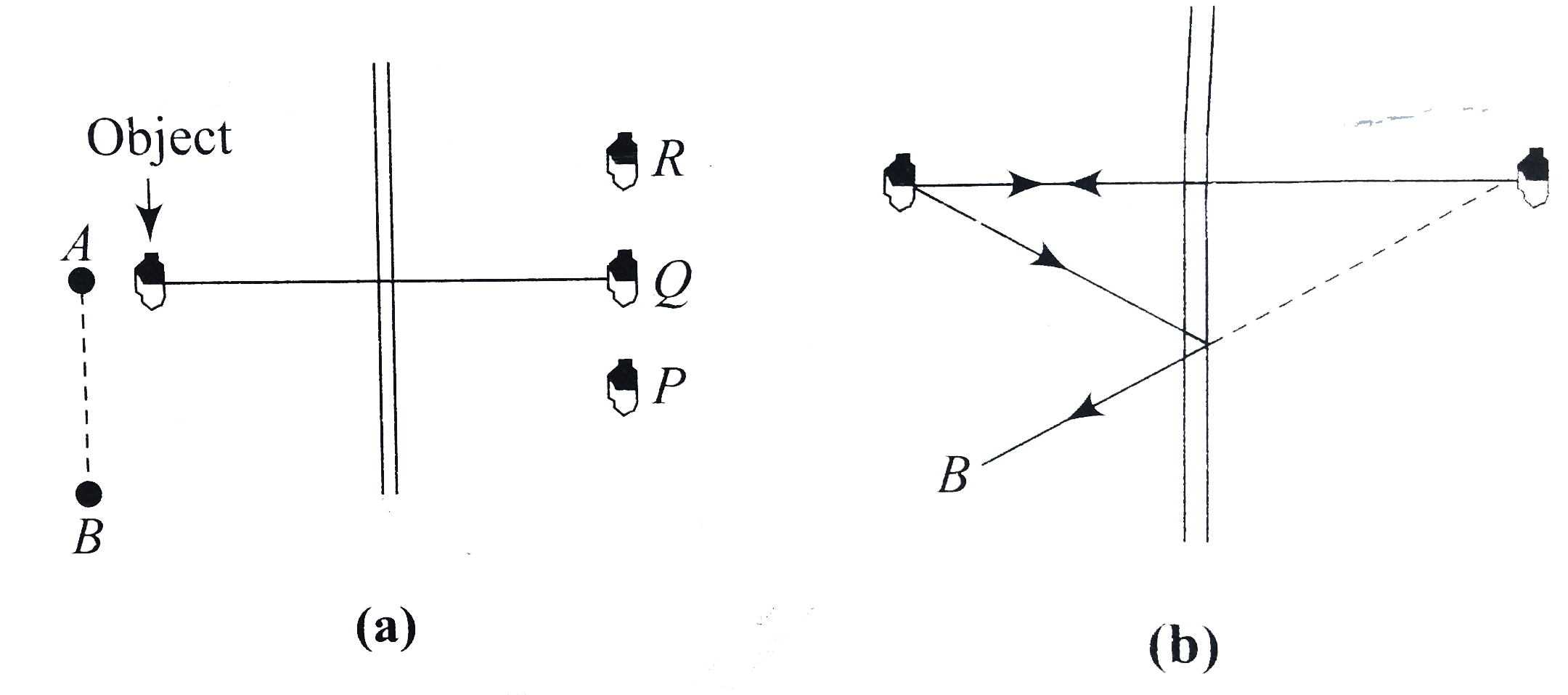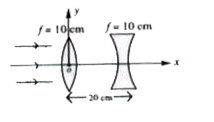In the arrangement shown in figure, O is the object. An observer is to the left of convex lens and looking towards lens. The observer will see an image

behind the mirror
between lens and mirror
to the left of lens
no image will be seen
The correct Answer is:b.
I1 is the image of O by lens. I2 is the image of I1 by mirror. Now for lens 1v−1−4=110
1v−110−14⇒v=−203cm
Observer will see between lens and mirror I3.

Topper's Solved these Questions
- GEOMETRICAL OPTICSBOOK - CENGAGE PHYSICS ENGLISHCHAPTER - GEOMETRICAL OPTICSEXERCISE - Assertion-Reasoninig
2 Videos
- GEOMETRICAL OPTICSBOOK - CENGAGE PHYSICS ENGLISHCHAPTER - GEOMETRICAL OPTICSEXERCISE - Linked Comprehension
51 Videos
- GEOMETRICAL OPTICSBOOK - CENGAGE PHYSICS ENGLISHCHAPTER - GEOMETRICAL OPTICSEXERCISE - Subjective
26 Videos
- ELECTRON,PHONTS,PHOTOELECTRIC EFFECT & X-RAYSBOOK - CENGAGE PHYSICS ENGLISHCHAPTER - ELECTRON,PHONTS,PHOTOELECTRIC EFFECT & X-RAYSEXERCISE - dpp 3.3
15 Videos
- HEATING EFFECT OF CURRENTBOOK - CENGAGE PHYSICS ENGLISHCHAPTER - HEATING EFFECT OF CURRENTEXERCISE - Thermal Power in Resistance Connected in Circuit
27 Videos
Similar Questions
In the arrangement shown in figure., the image of the extended object as seen by the observer is

View SolutionA diverging lens of focal length 10cm is placed 10cm away in front of a plane mirror as shwon in figure. Light from a very far away source falls on the lens. An observer is situated some where in between lens and mirror, and observer is looking towards mirror. The observer will see the image behind teh mirror at a distance.

View SolutionIn the figure shown, how many images of the star will an observer at O see?
_E01_006_Q01.png)
View SolutionFigure. (a)shows an object placed in front of a plane mirror. P,Q and R are the three positions where the image of object may be seen, Observer A is able to see the image at position Q. Where does the observer B see the image of the object?

View Solution
The distance between a convex lens and a plane mirror is 10 cm. The parallel rays incident on the convex lens after reflection from the mirror forms image at the optical centre of the lens. Focal length of lens will be
View SolutionThe minimum distance between an object and its real image formed by a convex lens is
View SolutionA point object is kept at the first focus of convex lens ,if the lens starts moving towards right will a constant velocity,th image will

View SolutionA convex lens of focal length 10 cm and a concave lens of same focal length in value are placed co-axially at a separation of 20 cm as shown in figure. A point object is at infinity on the principal axis. Take the optic center of convex lens as origin of co ordinate system and the principal axis as x-axis as shown in figure.

In the initial positin (as given in the passage ) if the concave lens has a velocit of 9 cm/s towards the convex lens, the velocity of the final image will be
View SolutionIn the figure (i) a thin lens of focal length 10cm is shown. The lens is cut into two equal parts, and the parts are arranged as shown in the figure (ii). An object AB of height 1cm is placed at distance of 7.5cm from the arrangement. The height of the final image will be:

View SolutionTwo lenses shown in figure. Are illuminated by a beam of parallel light from the left. Lens B is then moved slowly toward lens A. the beam emerging from lens B is

View Solution
